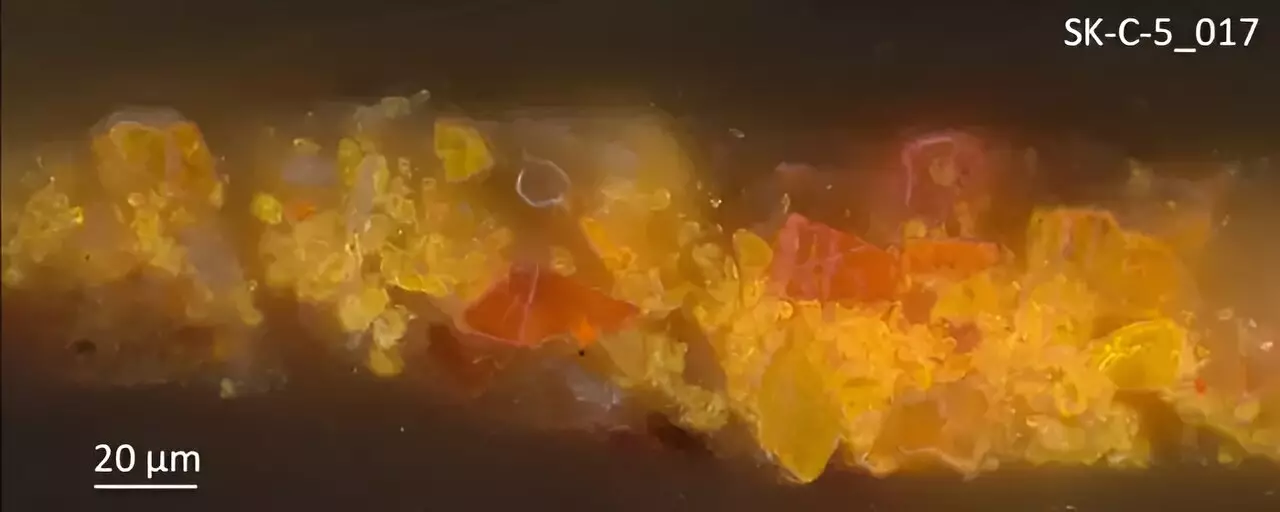Chemists at the Rijksmuseum and the University of Amsterdam (UvA) have recently made a groundbreaking discovery regarding Rembrandt’s use of special arsenic sulfide pigments in his masterpiece, “The Night Watch.” Through advanced spectroscopic techniques, researchers were able to identify the presence of pararealgar (yellow) and semi-amorphous pararealgar (orange/red) pigments, which contributed to the brilliant golden luster seen in the painting. This revelation sheds light on the artist’s innovative approach to incorporating these unique pigments into his work.
Upon closer analysis of the painting, it became evident that Rembrandt intentionally chose the rather unconventional combination of arsenic sulfide pigments to depict the intricate golden details of the clothing worn by Lieutenant Willem van Ruytenburch. The combination of pararealgar, semi-amorphous pararealgar, lead-tin yellow, and vermilion resulted in a distinct orange-“golden” hue that captured the essence of the era. This deliberate selection of pigments showcases Rembrandt’s meticulous attention to detail and his creative vision for achieving a specific aesthetic in his artwork.
The findings from this study have significant implications for the understanding of artistic techniques employed during the 17th century in Amsterdam. The use of arsenic sulfide pigments such as pararealgar and semi-amorphous pararealgar suggests a more diverse range of available materials than previously thought. This challenges the traditional narratives surrounding the limited palette of artists from that period and highlights the sophistication of Rembrandt’s approach to creating vibrant and lifelike compositions.
Historical Context and Scientific Validation
Through a comprehensive review of historical sources and in-depth scientific analysis, researchers were able to confirm the intentional use of arsenic sulfide pigments by Rembrandt. The discovery of similar mixtures of pigments used by his contemporaries, such as Willem Kalf, further supports the notion that Rembrandt was part of a larger artistic community experimenting with innovative materials and techniques. This validation strengthens the credibility of the research findings and underscores the importance of interdisciplinary collaboration in uncovering hidden secrets within artistic masterpieces.
The meticulous study of Rembrandt’s “golden” paint not only enriches our understanding of his artistic process but also contributes to the preservation of cultural heritage. By identifying the specific pigments and techniques employed by the master painter, conservationists and art historians can develop more effective strategies for safeguarding and restoring his works for future generations to enjoy. This research serves as a testament to the enduring legacy of Rembrandt and highlights the ongoing quest to unravel the mysteries concealed within the brushstrokes of great artists.


Leave a Reply